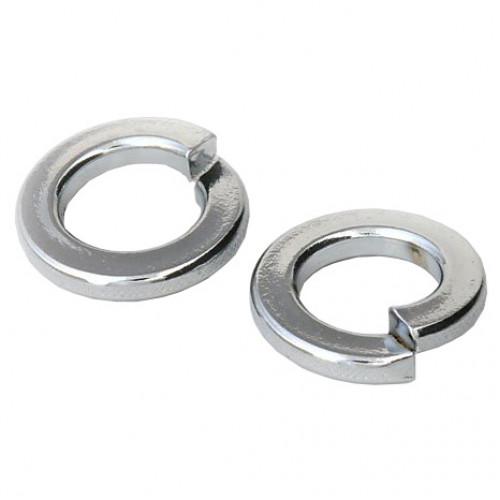SPRING WASHER – Powerline Hardware
Some Ideas on Wave Washer for sale - eBay You Should Know

Spring tension is required to compensate for these tolerances. Acknowledging these 2 broad areas of impact, it can be mentioned that the more common applications for spring washers are: To use up "play" in assemblies due to cumulative industrial tolerances. To compensate for small dimensional modifications in put together components. To eliminate end play or rattles.
To take in intermittent shock loads and function as working springs efficient in supplying regulated response under dynamic loads. A Reliable Source : We are connected only with makers having impressive programs and credibilities. We have made a major investment in our Quality Examination program to keep an eye on the conformance of incoming parts to customer requirements and needs.
Spring lock washer with square ends DIN 127 B Stainless Fundamentals Explained
We have actually developed a state-of-the-art control system to guarantee necessary lot traceability and certification on any part we sell. Load and deflection are the key characteristics of a spring washer. Just how much will the washer deflect under an offered load and at what point will it flatten. These values are normally shown in Load/Deflection (LD) curves with load, or used force, determined on one axis and washer deflection on the other.
The spring illustrated left wing, listed below the chart, is not deflected and there has actually been no load applied. On the chart we are at Point A. The vertical axis represents spring deflection in one-inch increments. The applications of 10 pounds of pressure deflects the spring one inch (Point B).
Little Known Facts About Spring Washers Manufacturers - DIC Fasteners.
At this moment, the spring is fully compressed. This graph shows a linear curve, or "consistent spring rate", as each ten pounds of pressure produces one inch of deflection. Most spring washers do not perform this regularly. As the force is gradually launched, it appears that the spring does not return to the full extension it had before deflection.
At Point E, for example, at a deflection of 3 inches, the spring is supplying a little less than 30 pounds of reactive force. This results from the spring having actually used some of its stored energy to get rid of friction caused by the bearing surface area at both ends. Some saved energy is also lost through the increased temperature that arises from intermolecular friction caused by the initial deflection.
UNDER MAINTENANCE